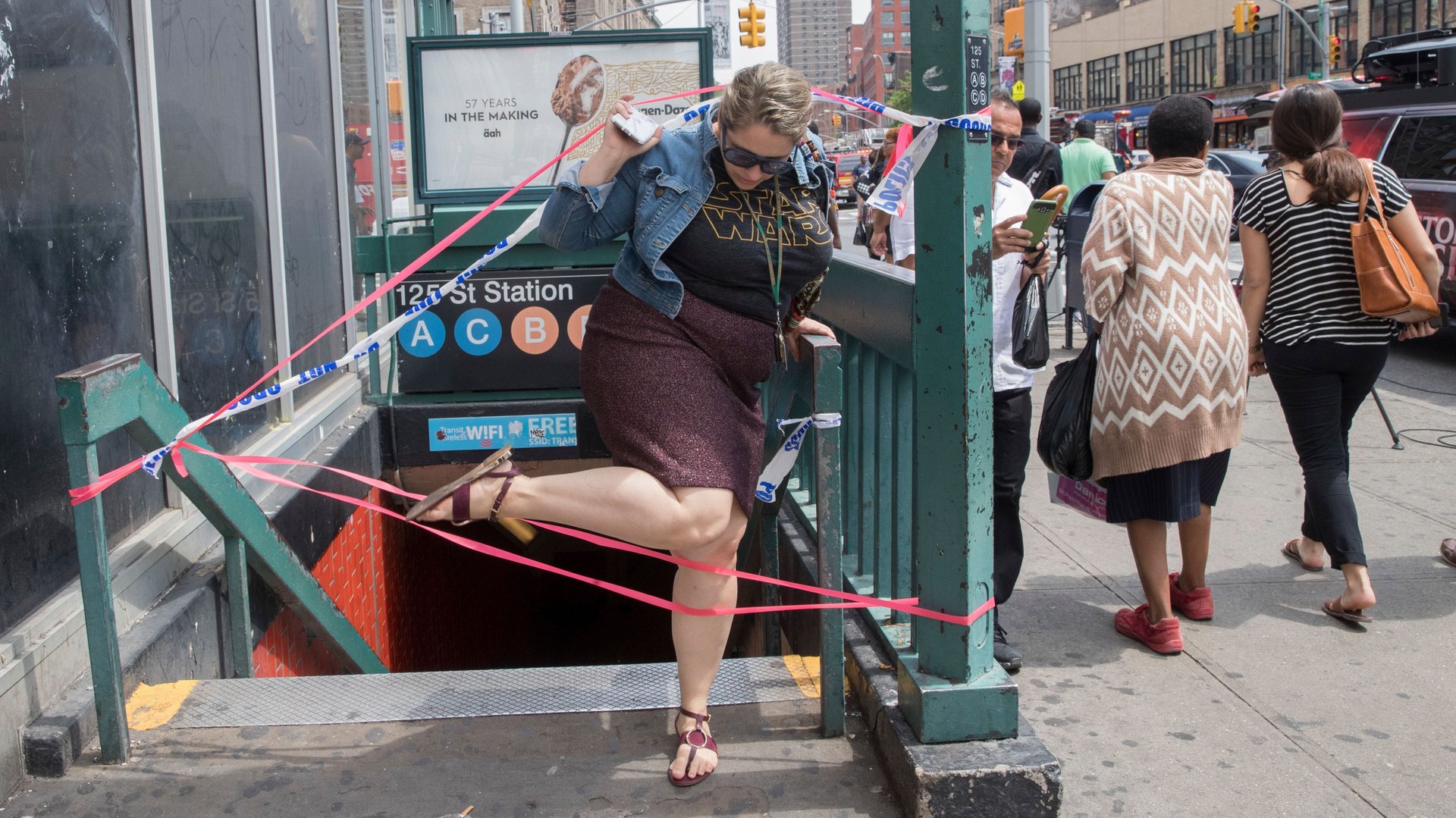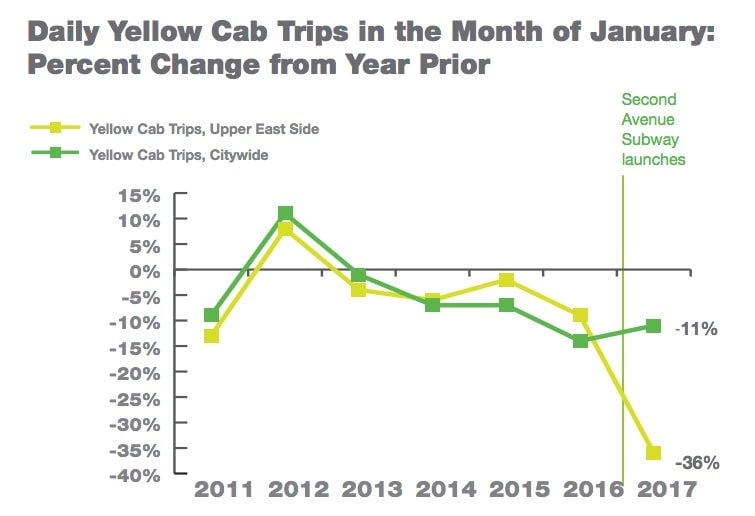The best cap on Uber would be to fix the frigging subway
New York City is the first city to set a wage floor for ride-hail drivers and to cap the number of ride-hail vehicles on its streets, after the city council passed a package of bills on Aug. 8 and mayor Bill de Blasio signed it into law on Aug. 14. Over the weekend, drivers queued outside Uber’s office in Queens for hours to register their vehicles before the cap took effect.


New York City is the first city to set a wage floor for ride-hail drivers and to cap the number of ride-hail vehicles on its streets, after the city council passed a package of bills on Aug. 8 and mayor Bill de Blasio signed it into law on Aug. 14. Over the weekend, drivers queued outside Uber’s office in Queens for hours to register their vehicles before the cap took effect.
The mayor has sought a cap on Uber since he failed to secure one in the summer of 2015, an embarrassing defeat made worse by Uber’s use of DE BLASIO mode, an in-app stunt that showed long wait times and no Ubers in the outer boroughs. His stated reason: congestion. The mayor is concerned about the vehicles that crowd our streets and pollute our air. In 2015, de Blasio wanted to cap Uber to “study” congestion. After city council voted last week, he touted the cap as a fix for “the unchecked growth of app-based for-hire vehicle companies” and “the congestion grinding our streets to a halt.”
But let’s be honest, there’s a much better way to cap Uber in New York City: Fix the goddamn subway.
This is not just the opinion of a frustrated and weary straphanger. Research shows that when people have access to good public transit, they use cars less. The opening of the Second Avenue subway in the previously transit-starved Upper East Side offers a good case study. Since service began in January 2017, yellow cab trips have plunged three times faster than in the rest of the city, the local department of transportation reported in June (pdf). Similarly, ride-hail grew more slowly on the Upper East Side than in the rest of Manhattan, and at nearly half the pace of all five boroughs.

Meanwhile, the subway is a dumpster fire—often quite literally. The New York City subway has the worst on-time rate in the nation, at 58% as of January, worse than the year before. Ten lines had on-time rates of below 50%. City comptroller Scott Stringer has estimated the annual cost of subway delays to workers and businesses at nearly $400 million. Yes, newly appointed transit chief Andy Byford has promised to fix it—and to get a dozen “Miguels” up and running by Monday—but things will get worse before they get better.
Where has de Blasio been through all this? Squabbling with the governor, squabbling with the governor about who will pay for the subway, talking up his Millionaire’s Tax, running red lights in his official motorcade, ignoring Byford, and, generally, not taking the subway. The mayor has also gone out of his way to oppose congestion pricing, a plan that not only would curb congestion by charging drivers to enter the busiest parts of Manhattan, but could also generate much-needed revenue to fund the subway rehabilitation.
Uber may have contributed to congestion in New York City but it is certainly not the root cause, nor will capping it fix congestion or do much to help stranded commuters. Local editorial boards were remarkably in agreement on this point, deeming the cap a “last-resort blunt instrument” and the case for it “weak.” Congestion pricing, fixing public transit—either of these would be far better options for reducing congestion than freezing the number of ride-hail vehicles. But this was never really about congestion. The mayor wanted a cap on Uber. And a cap is what he got.
An earlier version of this post was published in Oversharing, a newsletter about the sharing economy. Sign up here.